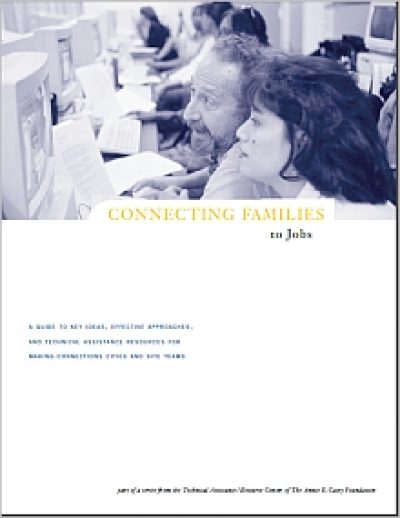A Starting Point
Recruiting and placing low-income workers in a job is not the end of the workforce development effort, but the beginning.

Ths report presents the issues, trends and challenges related to connecting poor families to jobs. It includes overviews of sector-based employment strategies, forging new partnerships with employers to improve job training and ways to help families keep jobs and move up career leaders. The guide places special emphasis on reaching harder-to-employ residents through community-based efforts, community service jobs and driver’s license recovery.
In isolated, disinvested poor neighborhoods, strong partnerships between employers, workforce agencies, social service providers, faith-based organizations, community colleges and others are critical to making sure the most vulnerable families are not left behind when economic times turn tough. This guide emphasizes the need for workforce development efforts that treat both employers and job seekers as customers, seize opportunities for innovation in the good times as well as the downturns, adapt to regional economic trends and build on what’s working.
We hope you'll find value in this report. We’d love to get a little information from you, which we'll use to notify you about relevant new resources.